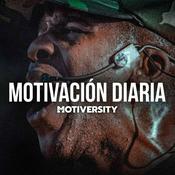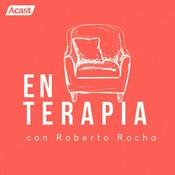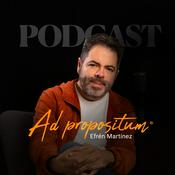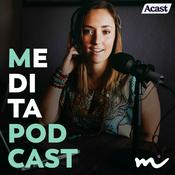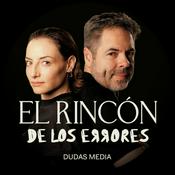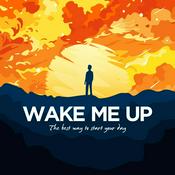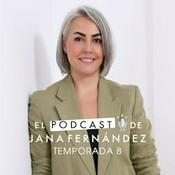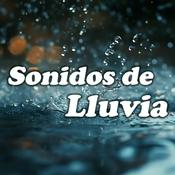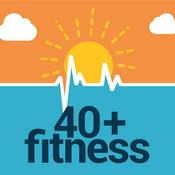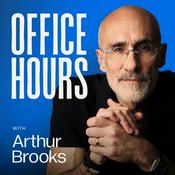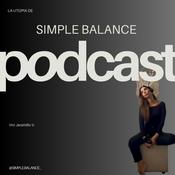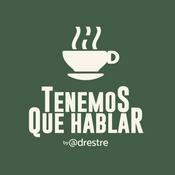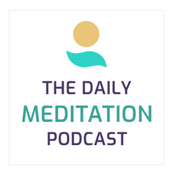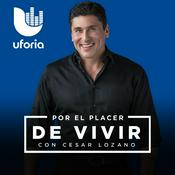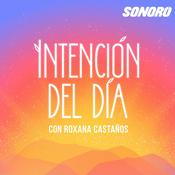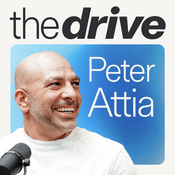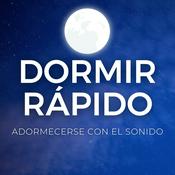357 episodios
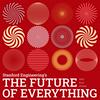
Happy New Year From The Future of Everything
31/12/2025 | 1 min
Hi everyone, it’s your host, Russ. As we celebrate another holiday season and round out the year, I want to take a moment to say thank you for listening. This show started out over 8 years ago as an experiment and has not only grown to become a passion project, but also an archive of the impactful work my colleagues across Stanford dedicate their lives to. In a time when the sheer volume of information available to us can make it hard to determine what’s accurate, I’m proud to be able to bring you information directly from expert scientists in the fields of physics, medicine, technology, computer science, law, and much more.The show, however, would not exist without you. So thank you for giving us your time and attention; it means a lot and also makes what we do possible.Happy holidays and happy new year! Connect With Us:Episode Transcripts >>> The Future of Everything WebsiteConnect with Russ >>> Threads / Bluesky / MastodonConnect with School of Engineering >>>Twitter/X / Instagram / LinkedIn / Facebook Hosted by Simplecast, an AdsWizz company. See pcm.adswizz.com for information about our collection and use of personal data for advertising.

Best of: The future of AI coaching
26/12/2025 | 30 min
We hope you’re enjoying the holiday season with family, friends, and loved ones. We’ll be releasing new episodes again in the new year – in the meantime, today, we’re re-running a fascinating episode on The future of AI coaching. The past few years have seen an incredible boom in AI and one of our colleagues, James Landay, a professor in Computer Science, thinks that when it comes to AI and education, things are just getting started. He’s particularly excited about the potential for AI to serve as a coach or tutor. We hope you’ll take another listen to this conversation and come away with some optimism for the potential AI has to help make us smarter and healthier. Have a question for Russ? Send it our way in writing or via voice memo, and it might be featured on an upcoming episode. Please introduce yourself, let us know where you're listening from, and share your question. You can send questions to [email protected] Reference Links:Stanford Profile: James LandayConnect With Us:Episode Transcripts >>> The Future of Everything WebsiteConnect with Russ >>> Threads / Bluesky / MastodonConnect with School of Engineering >>> Twitter/X / Instagram / LinkedIn / FacebookChapters:(00:00:00) IntroductionRuss Altman introduces guest James Landay, a professor of Computer Science at Stanford University.(00:01:44) Evolving AI ApplicationsHow large language models can replicate personal coaching experiences.(00:06:24) Role of Health Experts in AIIntegrating insights from medical professionals into AI coaching systems.(00:10:01) Personalization in AI CoachingHow AI coaches can adapt personalities and avatars to cater to user preferences.(00:12:30) Group Dynamics in AI CoachingPros and cons of adding social features and group support to AI coaching systems.(00:13:48) Ambient Awareness in TechnologyAmbient awareness and how it enhances user engagement without active attention.(00:17:24) Using AI in Elementary EducationNarrative-driven tutoring systems to inspire kids' learning and creativity.(00:22:39) Encouraging Student Writing with AIUsing LLMs to motivate students to write through personalized feedback.(00:23:32) Scaling AI Educational ToolsThe ACORN project and creating dynamic, scalable learning experiences.(00:27:38) Human-Centered AIThe concept of human-centered AI and its focus on designing for society.(00:30:13) Conclusion Connect With Us:Episode Transcripts >>> The Future of Everything WebsiteConnect with Russ >>> Threads / Bluesky / MastodonConnect with School of Engineering >>>Twitter/X / Instagram / LinkedIn / Facebook Hosted by Simplecast, an AdsWizz company. See pcm.adswizz.com for information about our collection and use of personal data for advertising.

The future of lipids in evolution
19/12/2025 | 32 min
Microbes are awesome, says biologist Paula Welander. They have shaped Earth’s chemistry and its environment over billions of years, including oxygenating the planet to make it habitable for larger life forms. In turn, microbes have been shaped by that very same environment, evolving as the climate has evolved, she says. Welander now studies the lipid membranes of ancient microbes, which can endure for millions of years, to understand this evolution and where we might be headed in the future. Microbes are our connection to the ancient world, Welander tells host Russ Altman on this episode of Stanford Engineering’s The Future of Everything podcast.Have a question for Russ? Send it our way in writing or via voice memo, and it might be featured on an upcoming episode. Please introduce yourself, let us know where you're listening from, and share your question. You can send questions to [email protected] Reference Links:Stanford Profile: Paula V. WelanderConnect With Us:Episode Transcripts >>> The Future of Everything WebsiteConnect with Russ >>> Threads / Bluesky / MastodonConnect with School of Engineering >>> Twitter/X / Instagram / LinkedIn / FacebookChapters:(00:00:00) IntroductionRuss Altman introduces guest Paula Welander, a professor of Earth Science at Stanford University.(00:04:06) Why Study Microbial LipidsWhy lipids are essential for modern microbiology and Earth’s history.(00:05:19) Diversity of Microbial MembranesHow bacteria and Archaea build different kinds of membranes.(00:07:15) Reconstructing Ancient EnvironmentsUsing specific lipid biomarkers to understand the early planet.(00:09:20) Chemical Fossils vs. Organism FossilsWhy microbes don’t leave traditional fossils—but their lipids do.(00:10:55) Lipids as Environmental CluesHow certain lipids indicate the environments organisms lived in.(00:12:36) Archaea: A Distinct and Ancient EntityArchaea’s evolutionary importance and chemically distinct membranes.(00:15:43) The Lipid DivideWhy eukaryotic membranes resemble bacterial, not Archaeal, membranes.(00:17:12) Tracing Membrane EvolutionRecent breakthroughs in studying Archaeal lineages related to eukaryotes.(00:19:11) Lipid Preservation Over TimeHow archaeal lipids are especially reliable as long-term biomarkers.(00:20:58) Sterols as BiomarkersThe role sterols, including cholesterol, play in lipid archeology.(00:23:14) Bacterial Cholesterol DiscoveryThe discovery that a rare bacteria can synthesize sterol precursors.(00:25:02) Functional Roles of Bacterial SterolsThe possible roles sterols may play in microbial membranes and cell function.(00:26:31) Archaea in the Human GutThe number and types of Archaea found in the human microbiome.(00:28:43) Archaea and AntibioticsWhether Archaea react similarly to bacteria when exposed to antibiotics.(00:29:46) Future In a MinuteRapid-fire Q&A: hope, research needs, and alternate career dreams.(00:31:43) Conclusion Connect With Us:Episode Transcripts >>> The Future of Everything WebsiteConnect with Russ >>> Threads / Bluesky / MastodonConnect with School of Engineering >>>Twitter/X / Instagram / LinkedIn / Facebook Hosted by Simplecast, an AdsWizz company. See pcm.adswizz.com for information about our collection and use of personal data for advertising.

The future of neurodegeneration
12/12/2025 | 34 min
Molecular biologist Judith Frydman studies the nuances of protein folding and how defects in the process lead to neurodegenerative diseases. Her team studies protein folding in human cells and in model organisms, like yeast and worms, to understand the molecular events that precipitate harmful protein defects in humans. In one example, Frydman’s team explored how aging affects the creation and the quality of proteins in the brain, leading to cognitive problems. She is now looking to develop therapies – someday perhaps leading to cures – to debilitating diseases such as Alzheimer’s, Parkinson’s, Huntington’s, ALS, and others. The power of science gives her true hope in these important pursuits, Frydman tells host Russ Altman in this episode of Stanford Engineering’s The Future of Everything podcast.Have a question for Russ? Send it our way in writing or via voice memo, and it might be featured on an upcoming episode. Please introduce yourself, let us know where you're listening from, and share your question. You can send questions to [email protected] Reference Links:Stanford Profile: Judith FrydmanConnect With Us:Episode Transcripts >>> The Future of Everything WebsiteConnect with Russ >>> Threads / Bluesky / MastodonConnect with School of Engineering >>> Twitter/X / Instagram / LinkedIn / FacebookChapters:(00:00:00) IntroductionRuss Altman introduces guest Judith Frydman, a professor of biology and genetics at Stanford University.(00:04:00) Linking Protein Folding to AgingHow aging disrupts protein-folding machinery across many organisms.(00:07:16) Universal Aging PatternsThe similar age-related protein-folding defects found across organisms(00:09:27) Studying Killifish AgeingResearch on the African killifish as a rapid-aging model organism.(00:13:05) Ribosome Function DeclinesHow aging causes ribosomes to stall and collide, creating faulty proteins.(00:15:31) Aging Across SpeciesThe potential factors causing alternate aging rates in different species.(20:11) What Fails Inside Aging CellsThe cellular components that are leading to bad protein creation.(00:24:04) Therapeutic ApproachesPotential interventions to combat cellular and neurological degeneration.(00:25:12) Gene vs. Small-Molecule TreatmentsHow some interventions may be better suited for certain diseases.(00:27:47) Ribosome Drug PotentialWhy ribosomes and translation factors are viable drug targets.(00:28:56) Next Steps in Aging ResearchUsing human skin fibroblasts to study human aging mechanisms.(00:31:46) Future In a MinuteRapid-fire Q&A: scientific progress, young researchers, and archeology.(00:33:54) Conclusion Connect With Us:Episode Transcripts >>> The Future of Everything WebsiteConnect with Russ >>> Threads / Bluesky / MastodonConnect with School of Engineering >>>Twitter/X / Instagram / LinkedIn / Facebook Hosted by Simplecast, an AdsWizz company. See pcm.adswizz.com for information about our collection and use of personal data for advertising.

The future of ribosomes
05/12/2025 | 34 min
Maria Barna is an authority on ribosomes – “life’s most ancient and spectacular molecular machines.” Ribosomes make proteins in the body. There can be a thousand different types of ribosomes in a single cell, she says, each with a specific job to do. But sometimes things go awry and ribosomes get “hijacked,” leading to disease. Barna studies these “diabolical” variations to find new therapies to treat diseases ranging from cancer and COVID to Parkinson’s. When diseases hit, it’s all about the ribosomes, Barna tells host Russ Altman on this episode of Stanford Engineering’s The Future of Everything podcast.Have a question for Russ? Send it our way in writing or via voice memo, and it might be featured on an upcoming episode. Please introduce yourself, let us know where you're listening from, and share your question. You can send questions to [email protected] Reference Links:Stanford Profile: Maria BarnaConnect With Us:Episode Transcripts >>> The Future of Everything WebsiteConnect with Russ >>> Threads / Bluesky / MastodonConnect with School of Engineering >>> Twitter/X / Instagram / LinkedIn / FacebookChapters:(00:00:00) IntroductionRuss Altman introduces guest Maria Barna, a professor of genetics at Stanford University.(00:04:21) Origins of Ribosome ResearchMaria explains why ribosomes became the focus of her work.(00:06:14) Ribosome Function and ScaleRibosomes’ functions and the energy required for their production.(00:08:28) Ribosomes as MachinesHow ribosomes influence which proteins are produced and when.(00:09:48) Ribosome RegulationThe regulatory layers within ribosomes and their possible variants.(00:14:35) Ribosomes and DiseaseHow ribosomal dysfunction is linked to a wide range of diseases.(00:18:16) Ribosome Mutations and DevelopmentCongenital disorders that can be attributed to specific ribosomal mutations.(00:20:44) RNA vs. Protein OutputWhy RNA measurements alone do not accurately predict protein levels.(00:24:16) Designing Ribosomes for TherapyThe potential of using engineered ribosomes for target therapies.(00:26:16) Small-Molecule Ribosome ModulatorsScreening compounds that may enhance ribosome activity for treatments.(00:28:39) Future Ribosome ProfilingIsolating individual ribosomes to understand their specific roles.(00:30:35) Future In a MinuteRapid-fire Q&A: scientific progress, community, and alternative career interest.(00:34:01) Conclusion Connect With Us:Episode Transcripts >>> The Future of Everything WebsiteConnect with Russ >>> Threads / Bluesky / MastodonConnect with School of Engineering >>>Twitter/X / Instagram / LinkedIn / Facebook Hosted by Simplecast, an AdsWizz company. See pcm.adswizz.com for information about our collection and use of personal data for advertising.
Más podcasts de Salud y forma física
Podcasts a la moda de Salud y forma física
Acerca de The Future of Everything
Escucha The Future of Everything, Durmiendo y muchos más podcasts de todo el mundo con la aplicación de radio.net

Descarga la app gratuita: radio.net
- Añadir radios y podcasts a favoritos
- Transmisión por Wi-Fi y Bluetooth
- Carplay & Android Auto compatible
- Muchas otras funciones de la app
Descarga la app gratuita: radio.net
- Añadir radios y podcasts a favoritos
- Transmisión por Wi-Fi y Bluetooth
- Carplay & Android Auto compatible
- Muchas otras funciones de la app


The Future of Everything
Descarga la app,
Escucha.

